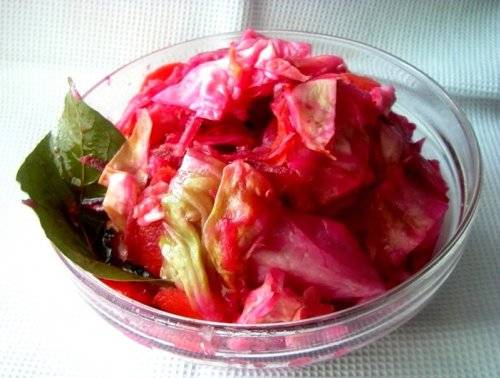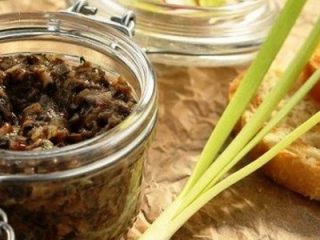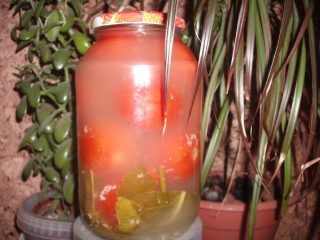Content
Autumn is coming and the time has come to produce tasty, healthy and interesting preparations from cabbage - a vegetable that not so long ago stood in first place in terms of prevalence in Russia. Recently, he has a competitor - potatoes. Nevertheless, such a variety of salads, snacks and winter preparations as for cabbage, perhaps, does not exist for any other vegetable crop. They do everything they can with it: they salt it, they ferment it, they pickle it, and each type of preparation has its own advantages.
How does salting differ from marinating?
In general, all known methods of preparing food for the winter, such as: salting, fermentation, soaking and pickling, are based on the action of acid. Only in the first three options is lactic acid produced naturally during fermentation under the influence of lactic acid bacteria. But when you pickle cabbage, you resort to the help of various acids from the outside world: most often acetic, sometimes tartaric, citric or malic. The preservation effect itself is achieved due to the fact that the acidity level shifts, which has a detrimental effect on the proliferation of unfavorable microorganisms. And in this sense, there is not much difference in what kind of vinegar is used for preserving preparations. Using ordinary table vinegar is just a habit, since it is most often found on sale.
So, to make salted cabbage, from 6 to 30% salt can be used. It has a very multifaceted effect on the finished product.
- Firstly, the taste indicators of the workpiece change and, as a rule, improve.
- Secondly, in salted cabbage, fermentation processes are accelerated due to the active release of plant cell sap, which is rich in sugars.
- Thirdly, since salt suppresses the vital activity of extraneous microflora, it has some preservative effect on cabbage preparations.
But if the cabbage was salted using vinegar, then this process has more right to be called pickling. However, many housewives use the terms pickling, fermentation and pickling, without making much difference between them, and even implying by them the same process - most often preparing cabbage for the winter using salt and vinegar.
Moreover, since any pickling of cabbage without vinegar makes the canning process drawn out in time - you have to wait from five to ten days - the addition of vinegar significantly speeds up the production of the finished product, which in taste may be practically no different from what has been cooked for a long time.
That is why, in our time of high-speed technology, recipes for pickling cabbage using vinegar are very popular.
All basic proportions when using other types of vinegar for preparations remain the same.
Cabbage is crispy and spicy
This option for making salted cabbage can be called universal, since it is quite suitable even for children, but when using garlic and red pepper, men will really like it.
The main ingredients for 2 kg of white cabbage are 0.4 kg of carrots and apples. For a spicier option, add 5 cloves of garlic and 1-2 hot red pepper.
The marinade has the following composition:
- Half a liter of water;
- 150 ml vegetable oil;
- 150 ml vinegar;
- 100 grams of granulated sugar;
- 60 grams of salt;
- Bay leaf, peppercorns and cloves - to taste.
First you can start preparing the marinade. To do this, the water is brought to a boil, all the ingredients for the recipe are placed in it and everything is boiled together for another 5-7 minutes.
At the same time, you need to cut off all cabbage leaves that are unsuitable for pickling: dirty, old, wilted, green.
Cabbage can be chopped in any way convenient for you. Peppers and garlic, after removing all excess: husks, seed chambers, are cut into narrow and thin slices.
All vegetables are mixed well and compacted tightly into a glass jar. After the marinade has boiled sufficiently, it is carefully poured into this jar up to the neck. You can cover the jar with a lid, but not tightly, and leave to cool. After 24 hours, the cabbage preparation is ready for use.
Cauliflower with vinegar
White cabbage is the undisputed leader among the large cabbage family in terms of the number of dishes made from it. But other varieties of cabbage can be no less tasty.So, if you try to pickle cauliflower with vinegar according to the recipe below, then, undoubtedly, you will surprise and delight your family and friends with the original taste of the unusual preparation.
You will need about 1 kg of cauliflower. The head of cabbage must be washed well and divided into small parts, no larger than 5 cm. Be sure to add one large carrot, which, after peeling, cut into thin slices. One large bell pepper is seeded and cut into strips.
This preparation also requires the addition of stem and root celery (about 50-80 grams). However, you can always replace it with root and leaf parsley or other herbs of your choice. Cut celery or parsley into small pieces of arbitrary shape. If you do not try to make a similar preparation with an eye to long-term winter storage, then be sure to try adding two onions to this recipe. The onion is peeled as usual and cut into thin half rings.
For the manufacture of pickled cauliflower A fairly standard fill is used:
- Water - three glasses;
- Vinegar – ¾ cup;
- Granulated sugar - ¾ cup;
- Salt – 2 teaspoons;
- Spices: allspice, cloves, bay leaf - to taste.
Mix all ingredients with water and bring to a boil. At the same time, take clean sterilized jars and place vegetables in them layer by layer: a layer of cauliflower, then carrots, again a colored variety, then bell peppers, celery and so on. When the jar is filled up to the shoulders with vegetables, pour the hot marinade over its contents.
After cooling, it is advisable to keep the jar of cauliflower in a cool place for about two days. After steeping, you can enjoy the slightly sweet and slightly sour taste of pickled cauliflower.
If this cauliflower pickling recipe If you like it so much that you want to seal a few jars for the winter for long-term storage, then you should proceed as follows.
Firstly, it is better not to use onions in production, since they do not contribute to the long-term preservation of products. And secondly, after pouring boiling brine and vinegar over the vegetables, place the jars of cauliflower to sterilize in boiling water for at least 20 minutes. After sterilization, jars with cauliflower preparation can be screwed on with either traditional metal lids or screw caps.
In this device, at a temperature of +240°C, it will be enough to sterilize jars of cauliflower for 10-15 minutes so that they are stored all winter.
Any housewife must pickle cabbage in the fall, so perhaps the above recipes for preparations with vinegar will come in handy not only to provide your family with vitamins in the winter, but also to decorate the table during the holidays.
















